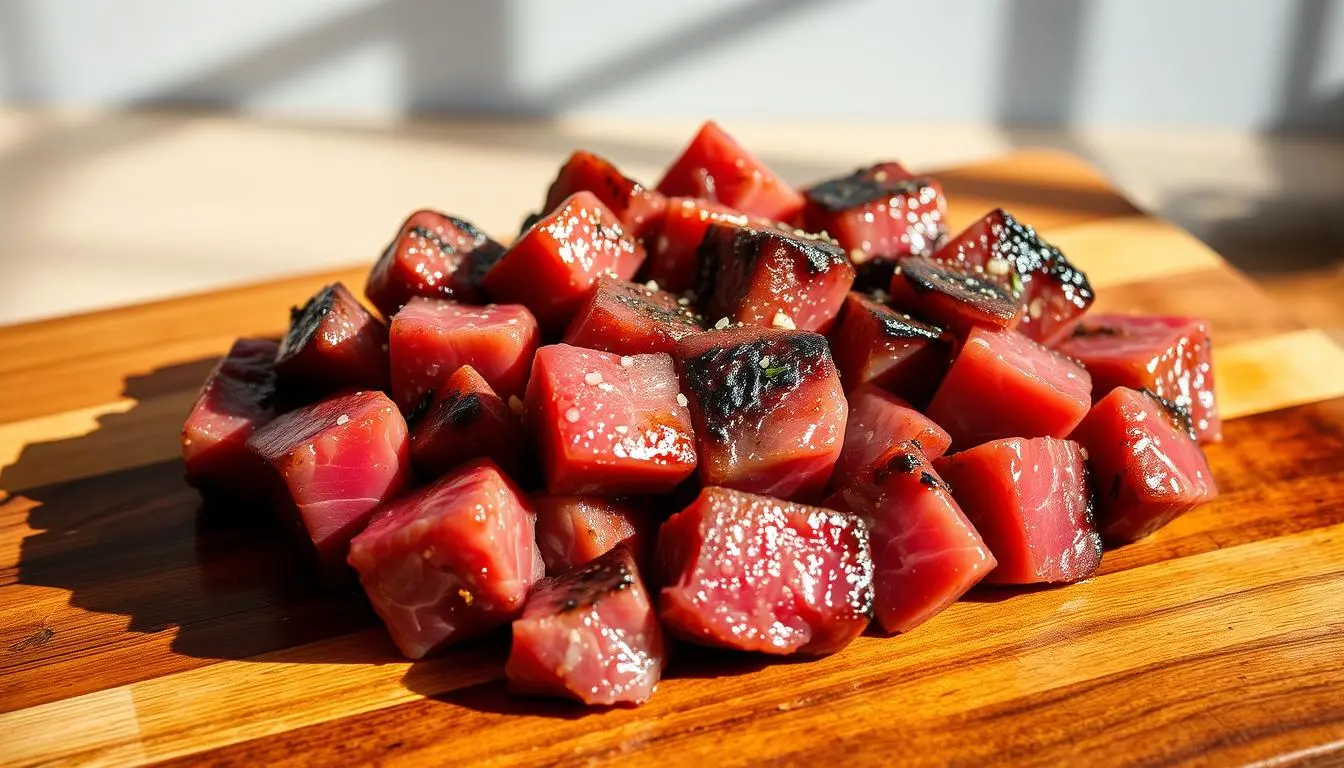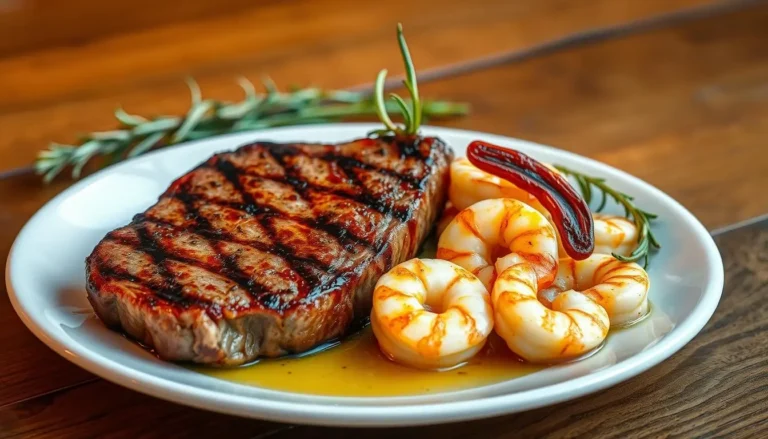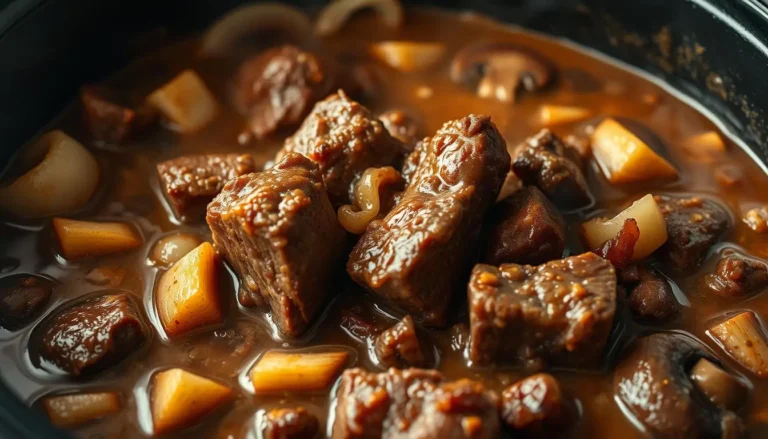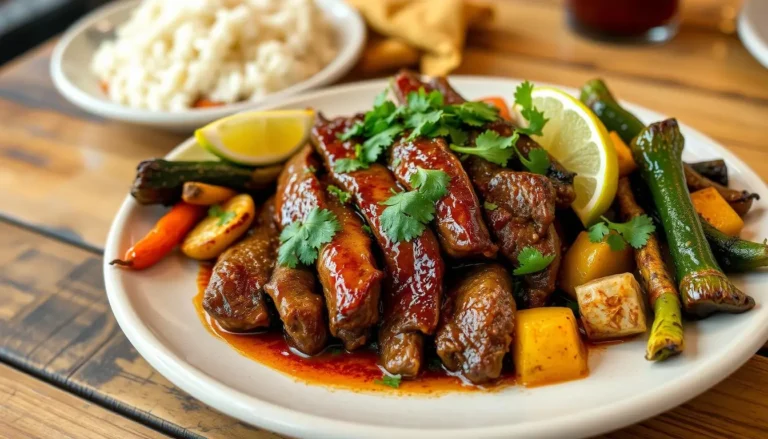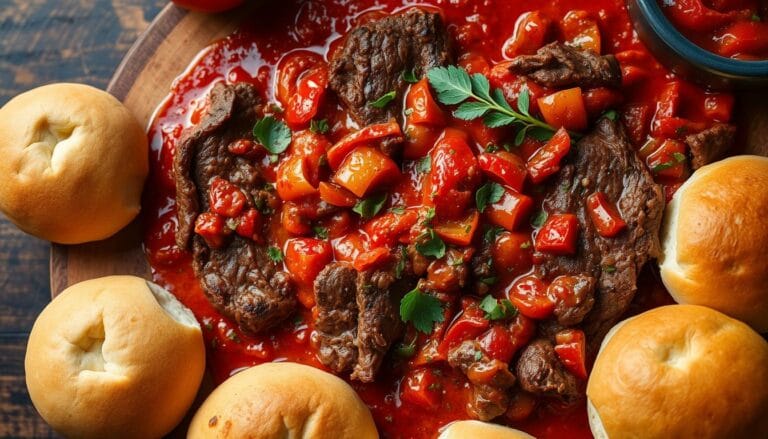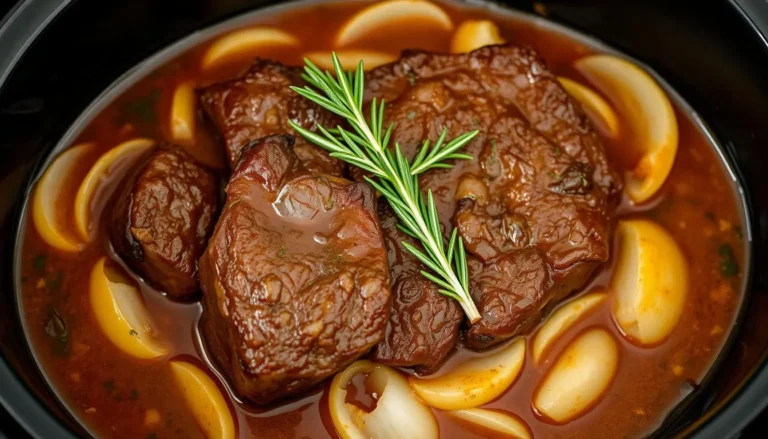How to Make the Best Venison Cubed Steak Recipe
As the sun sets, a sizzle in the kitchen calls us in. It’s more than just food; it’s a way to connect with our past. Venison cubed steak recipe is special, reminding us of outdoor fun and family times.
This dish is not just a meal; it’s a chance to share stories and enjoy good food together. Let’s make a venison steak recipe that will impress everyone and spark new tastes.
Table of Contents
Introduction to Venison Cubed Steak
Welcome to the world of venison cubed steak. It’s a dish that offers amazing flavor and is perfect for a hearty meal. This dish is loved by both seasoned chefs and those new to cooking. It’s known for its unique taste, less fat, and more protein than regular meats.
Cooking venison lets you try out different cooking methods. It’s great for adding variety to your meals. Its flavor is comforting, making it both tasty and nourishing. You can make many recipes, from simple pan-fried steaks to slow-cooked dishes that are incredibly tender.
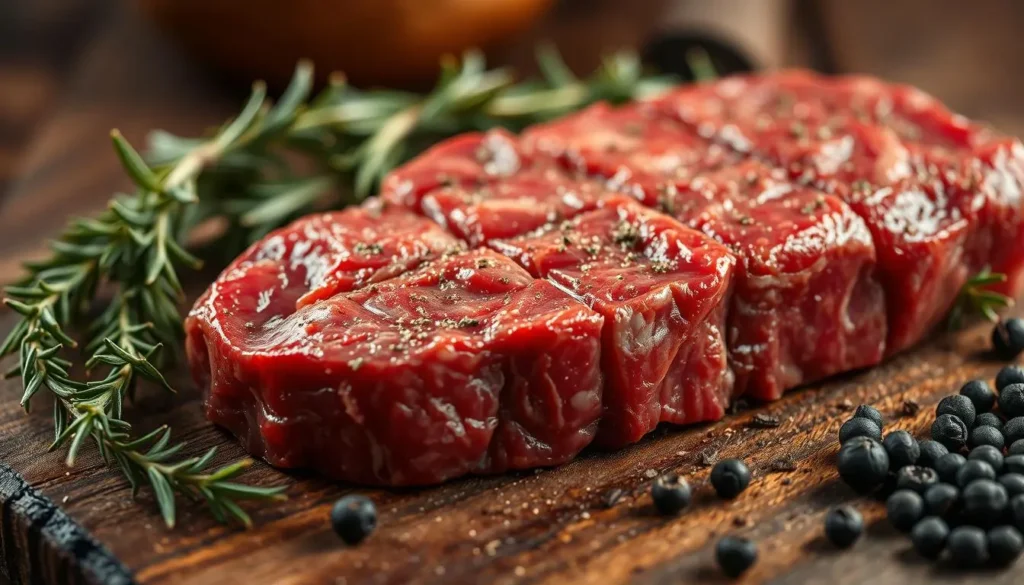
With the right cooking techniques, you can make venison into unforgettable dishes. It’s becoming more popular among hunters and meat lovers. Now is the best time to explore the culinary possibilities of venison cubed steak. It’s a chance to excite your taste buds and wow your guests with something special.
What is Cubed Steak?
Cubed steak is known for its unique texture and how it’s prepared. It comes from tougher meat cuts that are tenderized. This can be done by pounding or using a tenderizer. The result is a fine texture, ideal for frying and braising.
Understanding cubed steak helps you see its versatility, which is great in Southern recipes. It’s also great at soaking up flavors from spices and sauces. This makes it a favorite in comfort food, paired with gravies or veggies.
Creating cubed steak involves careful meat selection and cooking. This enhances its tender qualities. Knowing about cubed steak opens up a world of tasty possibilities.
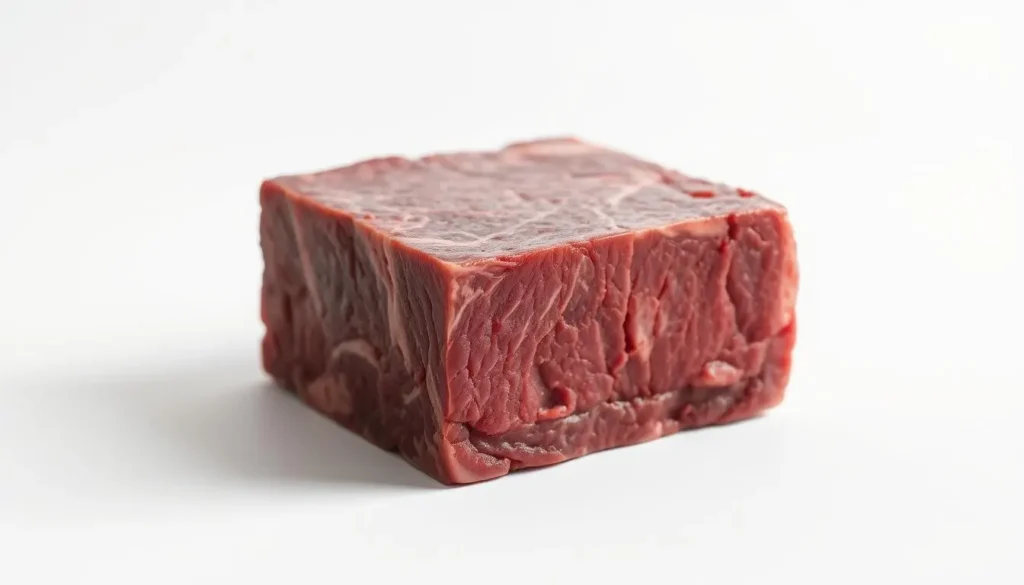
| Aspect | Details |
|---|---|
| Source Cut | Tougher cuts of meat |
| Tenderizing Method | Pounding or mechanical tenderizing |
| Common Cooking Methods | Frying, braising, simmering |
| Texture | Fine and tender |
| Flavor Absorption | Excellent for marinades and gravies |
Benefits of Cooking with Venison
Exploring the benefits of venison reveals its unique nutritional profile. Venison is a lean meat, with wild types having only 3% to 5% fat. This is much less than farmed meats, which can have up to 20% fat. This makes venison a great choice for those watching their fat intake.
The nutritional value of venison goes beyond its low fat. A 3-ounce serving has just 134 calories and 6 grams of fat. This is less than beef, which has 168 calories and 11 grams of fat. Venison’s low calories and high protein make it a healthier option.
From an ecological standpoint, venison is a sustainable protein. Hunting deer helps manage populations and lowers CO2 emissions. Wild venison produces only 6.53 kg CO2e/kg, much less than beef. This appeals to those who care about the environment.
Venison lacks growth hormones and dietary supplements found in commercial meats. This makes it attractive to those with health concerns, like heart issues. Choosing venison means opting for clean, natural meat, making it a mindful dietary choice.
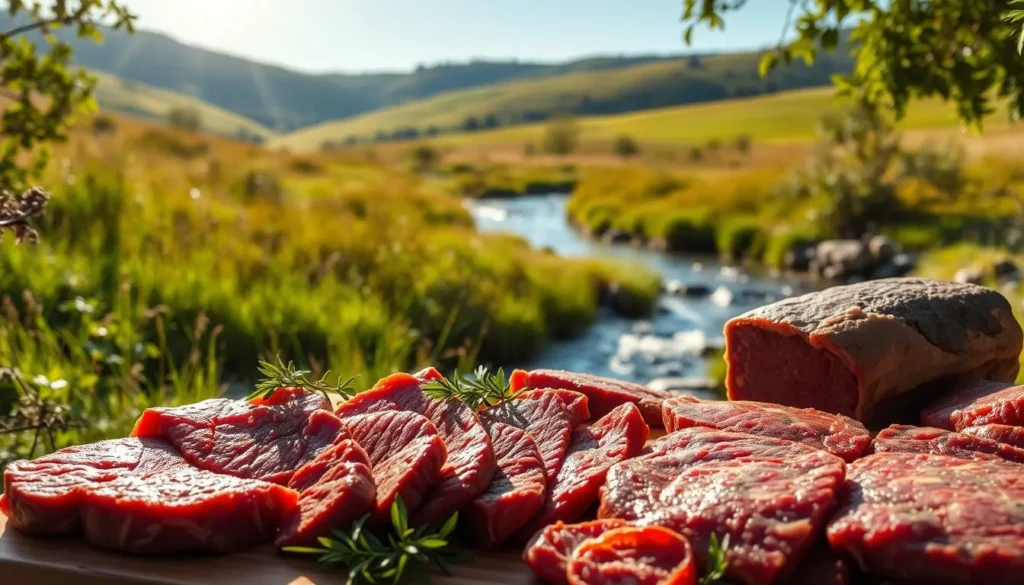
Choosing the Right Cut of Venison
Understanding the different venison cuts is key to a great cubed steak dish. Each cut has its own unique traits, fitting various cooking styles and tastes. Knowing which best cuts for cubed steak to pick will make your meal both tasty and tender.
The backstrap, known as the “filet mignon” of venison, is a top choice for its luxurious feel. It’s tender and full of flavor. The tenderloin, or “venison fillet,” is also excellent. It’s lean and offers a delicate taste.
The sirloin is versatile, great for steaks or roasts. Round steak is leaner but full of flavor, perfect for marinating. Chuck steak, though tougher, becomes tender with slow cooking, ideal for stews or braising.
Flank steak, similar to beef, is best marinated and cooked quickly. Neck roast is for those who like to experiment, needing longer cooking but tender when done right. Hindquarter steak is also good for grilling or roasting, often yielding great results.
The table below summarizes the various cuts and their characteristics for easy comparison:
| Cut | Texture | Best Cooking Method |
|---|---|---|
| Backstrap (Loin) | Tender, Rich | Grill, Sear |
| Tenderloin | Extremely Tender, Lean | Grill, Roast |
| Sirloin | Versatile | Grill, Roast |
| Round Steak | Lean, Flavorful | Marinate, Grill |
| Chuck Steak | Tough, Rich | Slow Cook, Braise |
| Flank Steak | Grill, Quick Cook | |
| Neck Roast | Tough | Slow Cook |
| Hindquarter Steak | Moderately Tender | Grill, Roast |
Choosing the right venison cut makes your dish better and lets you pick the best cooking method. Whether it’s tenderloin or chuck steak, knowing your cuts ensures a delicious cubed steak for any meal.

Venison Cubed Steak Recipe: Juicy, Flavorful Dish
To make a tasty venison cubed steak, you need the right ingredients and cooking tools. This guide lists what you need to make your dish a success.
Ingredients Needed for the Recipe
- 4 ounces of venison cubed steak
- 3 tablespoons of flour
- 1 tablespoon of garlic powder
- Salt and pepper to taste
- 1 egg white mixed with 1 tablespoon of water (for coating)
- Cornmeal for dredging
- Butter for searing
- Milk for gravy preparation
- Bouillon cubes and herbs to enhance flavor
Cooking Equipment Required
- Cast-iron skillet or frying pan
- Mixing bowls for dredging and coating
- Meat tenderizer for even thickness
- Measuring cups and spoons
- Spatula for flipping steaks
- Whisk for mixing the roux

With the right tools and ingredients, you’re ready to make a delicious venison cubed steak. Make sure you have these kitchen essentials before you start cooking.
How to Prepare Venison Cubed Steak
Preparing venison steak needs careful steps to make it tender and tasty. Using the right methods for tenderizing and setting up a dredging station is key. These steps help improve the steak’s texture and add a crispy coating.
Tenderizing the Meat
Tenderizing venison is crucial for a tender steak. You can use a meat mallet or a Jaccard meat tenderizer. These tools help break down tough fibers. For extra flavor, marinate the venison in an acidic mix for 2-4 hours. This makes the meat tender and flavorful.
Creating the Perfect Dredging Station
Creating a crispy coating on venison cubed steak is easy with the right dredging techniques. Prepare a station with three dishes: flour, eggs, and seasoned breadcrumbs. Coat the venison in flour, then in eggs, and lastly in breadcrumbs. This careful layering gives a crunchy texture that’s perfect with the tender steak.
| Preparation Steps | Description |
|---|---|
| Tenderizing Venison | Use a meat mallet or Jaccard tenderizer to break down tough fibers. |
| Marination | Marinate in an acidic solution for 2-4 hours for enhanced flavor. |
| Dredging Station Setup | Prepare dishes for flour, eggs, and seasoned breadcrumbs. |
| Dredging Procedure | Coat with flour, dip in egg, then coat with breadcrumbs. |
Step-by-Step Cooking Instructions
Cooking venison steak is very rewarding. This guide will help you make a tasty venison cubed steak. Start by letting your venison steaks warm up to room temperature for at least an hour. This makes them cook evenly.
First, mix your marinade. Use olive oil, Worcestershire sauce, minced garlic, kosher salt, and black pepper. Coat the steaks well with this mix. Let them marinate for at least an hour, or even better, overnight.
Then, set up your dredging station. In one bowl, mix flour, garlic powder, and a bit of Maldon sea salt. Lightly coat each steak with this mix for a crispy layer when pan-fried.
Heat your skillet over medium-high and add two tablespoons of oil. Wait until the oil shimmers before adding the steaks. Cook for 3-4 minutes on each side for a nice brown color. Baste with unsalted butter to enhance the flavor.
For the final step, cook the steaks to 135°F for medium-rare. After reaching this temperature, remove them and let them rest for 10 minutes. This makes the steak tender and juicy.
To serve, cut the steak against the grain for easier chewing. Serve with cooked rice for a complete meal. Enjoy this flavorful dish that showcases venison’s unique taste!
| Ingredient | Amount |
|---|---|
| Venison Steak | 1 pound |
| Kosher Salt | 1/2 teaspoon |
| Black Pepper | A few grinds |
| All-Purpose Flour | 1/2 cup |
| Garlic Powder | 1/2 teaspoon |
| Olive Oil | 2 tablespoons |
| Onion | 1 (sliced) |
| Sliced Mushrooms | 8 ounces |
| Onion Soup Mix | 1 packet |
| Beef Broth | 15 ounces |
| Worcestershire Sauce | 2 dashes |
| Cooked Rice | 2 cups |
Techniques for Perfectly Cooking Cubed Steak
Mastering the art of cooking cubed steak takes focus. One key step is getting the fry temperature for cubed steak just right. This makes the outside crispy and the inside tender and full of flavor.
Maintaining Right Temperature for Frying
Begin by heating your skillet to medium heat. Aim for 145°F for a medium-rare steak. This ensures it stays tender and juicy.
Fry the steak for 4-5 minutes on each side. This helps it reach the perfect internal temperature. For medium rare, aim for 130–135°F. For medium, go for 135–145°F. Cooking slowly helps create a great crust while keeping the steak moist.
Resting the Steak Before Serving
Resting the meat is crucial. After cooking, let your cubed steak rest for at least 5 minutes before slicing. This allows the juices to spread evenly, making the steak more flavorful and moist.
Skipping this step can make the steak dry. By following these steps, you’ll always get perfect cubed steak.
Delicious Variations of Venison Cubed Steak
Exploring venison cubed steak can lead to tasty variations. You can use different marinades, spices, and cooking methods. This turns a classic dish into a gourmet delight. Try a garlic-herb marinade or savory spice blends to enhance the venison’s flavor.
Slow cooking is another great way to prepare venison steaks. Use a slow cooker with cream of chicken and French onion soup. This creates a rich sauce that pairs well with the steak. It makes the meat tender and perfect for gatherings.
Frying venison steaks in peanut oil is a Southern favorite. It gives a crispy texture and keeps the meat juicy. Serving it with fresh greens or roasted veggies adds nutrition and makes it a healthy meal.
Here are some creative ways to enjoy venison cubed steak:
| Variation | Ingredients | Cooking Method |
|---|---|---|
| Garlic-Herb Marinade | Olive oil, garlic powder, rosemary, thyme | Grill or pan-fry |
| Spicy Cajun Flavors | Cajun seasoning, papaya juice, hot sauce | Fry or bake |
| Slow Cooker Delight | Cream of chicken soup, French onion soup | Slow cook on low for 6-8 hours |
| Southwestern Style | Chili powder, cumin, lime juice | Grill or sauté |
These ideas make your meals more exciting. They encourage you to try new flavors and cooking methods. Venison cubed steak can be a hit at any dinner.
What Part of a Deer Do You Get Cubed Steak From?
Knowing where cubed steak comes from makes it even more enjoyable. It usually comes from the tenderloin, backstrap, flank, and hindquarter. These parts give venison its unique taste and texture.
The tenderloin is the first cut from a deer. It’s very tender, perfect for cubing. The backstrap is the most popular cut. It needs to be cooked to 125 degrees Fahrenheit for the best taste.
The flank comes from the belly and is a bit tougher. It’s good for cubing but needs marinating. The hindquarter is the biggest cut. It can be used for steaks and shish kebabs, making tasty cubed steak dishes.
Check out the venison cut guide below for more cuts for cubed steak:
| Cut of Deer | Description | Ideal Cooking Method |
|---|---|---|
| Tenderloin | Exceptional tenderness and flavor. | Quick cook or grill to maintain juiciness. |
| Backstrap | Popular cut, known for taste; best cooked medium-rare. | Sear or grill, resting after cooking. |
| Flank | Tough cut with significant sinew; requires marinating. | Slow cooking or braising for tenderness. |
| Hindquarter | Largest cut; versatile for various preparations. | Grilling, roasting, or cubing for dishes. |
Choosing the right deer cuts for cubed steak can make a meal special. Think about the meat’s properties to get the best results.
Pairing Suggestions for Venison Cubed Steak
Enjoying your venison cubed steak can be even better with the right *side dishes*. Venison has a rich flavor that pairs well with many foods. These foods can enhance its taste and texture.
*What to serve with venison steak* includes creamy mashed potatoes and roasted vegetables. These add a comforting and colorful touch. Sautéed greens and wild rice or quinoa salads bring a fresh and nutty element. A light coleslaw or cucumber salad can also add a refreshing contrast.
For *pairing recommendations*, a medium-bodied red wine like Pinot Noir or Merlot is great. If you prefer beer, a stout or amber ale complements the steak well. For a non-alcoholic choice, try a fruity sparkling water with lemon or herbs.
| Side Dish | Description | Flavor Profile |
|---|---|---|
| Mashed Potatoes | Creamy and buttery, perfect for soaking up juices. | Rich and comforting |
| Roasted Vegetables | Seasonal veggies, slightly caramelized for sweetness. | Earthy and sweet |
| Sautéed Greens | Lightly cooked greens, seasoned to taste. | Fresh and slightly bitter |
| Wild Rice Salad | A colorful mix with nuts and dried fruits for texture. | Nutty and sweet |
| Coleslaw | Crisp and creamy, adding crunch to the meal. | Crisp and tangy |
Knowing what to serve with your venison cubed steak can make a big difference. Try these *pairing recommendations* to find your favorite combinations.
Common Mistakes When Cooking Cubed Steak
Cooking venison cubed steak can be rewarding, but there are common steak errors to watch out for. One big mistake is overcooking the meat. For beginners, getting the temperature right is key. Venison should hit 145°F for the best taste and tenderness.
Another mistake is choosing the wrong cuts of meat. Using shanks for steak or backstrap for burgers is a bad idea. Each cut needs a different cooking method. For example, shanks and neck meat do well with slow cooking, like braising in a Dutch oven.
Using the right ingredients and flavors is also crucial. Mixing ground deer with fatty meats like ground pork boosts moisture and taste, great for burgers and meatballs. Knowing these tips can help you cook better and avoid common steak errors.
Having a few basic recipes can help you appreciate cooking venison more. As you get better, you’ll find avoiding these mistakes makes cooking more fun. This way, you can make delicious cubed steak every time.
Storing Leftover Venison Cubed Steak
After enjoying your delicious venison cubed steak, it’s important to store it right. This keeps the quality and flavor of your leftovers. Storing cooked venison well lets you enjoy it again later.
For how to store cubed steak, start with the fridge. Put the meat in a sealed container to keep it fresh. Try to eat it within three days to avoid bacterial growth.
If you want to keep it longer, freeze it. Use freezer bags and remove air to keep it fresh. Frozen, it stays good for up to three months. Just remember to label the bags with the date.
To thaw frozen steak, let it defrost in the fridge overnight. This way, it stays tender and flavorful. When reheating, make sure it reaches 165°F to be safe.
How to Reheat Venison Cubed Steak
Reheating venison steak right is key to keep its taste and texture. There are good ways to do this that keep the meat moist and tender. These methods stop the meat from drying out, so you can enjoy your leftover venison cubed steak as much as the first time.
One top way to reheat venison steak is in a skillet. Start by putting the steak in a skillet on low heat. Add a bit of broth or water to the pan to keep moisture in. Then, cover the skillet with a lid and let the meat warm up for 5 to 7 minutes, checking it often. This method makes sure each bite is juicy and full of flavor.
Using a microwave is another good option. Set your microwave to 60% power and put the steak on a microwave-safe plate. Cover the steak with a damp paper towel to keep moisture in. Heat the venison steak in short bursts of 30 seconds, flipping it after each one until it’s hot all the way through. Always check the internal temperature reaches at least 145°F before serving.
The following table summarizes the two reheating methods for quick reference:
| Method | Time | Tips |
|---|---|---|
| Skillet | 5–7 minutes | Add broth/water and cover |
| Microwave | 1–3 minutes (based on thickness) | Cover with damp paper towel |
Warming up cubed steak with these methods keeps its quality and taste, making it a tasty leftover meal. By following these reheating tips, you can avoid texture problems and fully enjoy your venison dishes.
Related Deer Meat Cube Steak Recipes
Exploring different deer meat recipes can add variety to your meals. Venison steak dishes are perfect for showing off this lean protein’s versatility. Try slow-cooked venison stew or grilled venison chops for a change of pace.
Grilling a marinated venison steak can be a real treat. Mix olive oil, garlic, and herbs for a tasty marinade. This makes the meat tender and flavorful, making each bite a delight.
Using the Instant Pot can make cooking deer meat quick and easy. Just 4 minutes on Manual High Pressure, followed by a 5-minute natural release, can cook your venison steak fast. Make sure to check the meat’s internal temperature for the perfect doneness.
Don’t be afraid to try new seasonings like black pepper, thyme, and rosemary. These spices can bring out the natural flavors of the meat. Whether you prefer a juicy steak or a warm stew, using different venison cuts can make your meals more interesting and healthy.
Conclusion
This venison recipe recap shows the benefits of cooking venison. It’s low in fat and high in protein. A 3-ounce serving has about 26 grams of protein. This makes it a great choice for a healthy diet without losing flavor.
Preparing venison cubed steak can be very rewarding. Make sure to cook it right, using the right times and temperatures. Remember, searing it in a skillet or using sous vide can make it even better. Marinating or soaking the meat before cooking can also improve its tenderness and taste.
Now you know how to cook venison, it’s time to try it out. Bring the joy of cooking venison into your kitchen. With these tips, you’ll have a great time cooking and sharing delicious meals with your guests.

